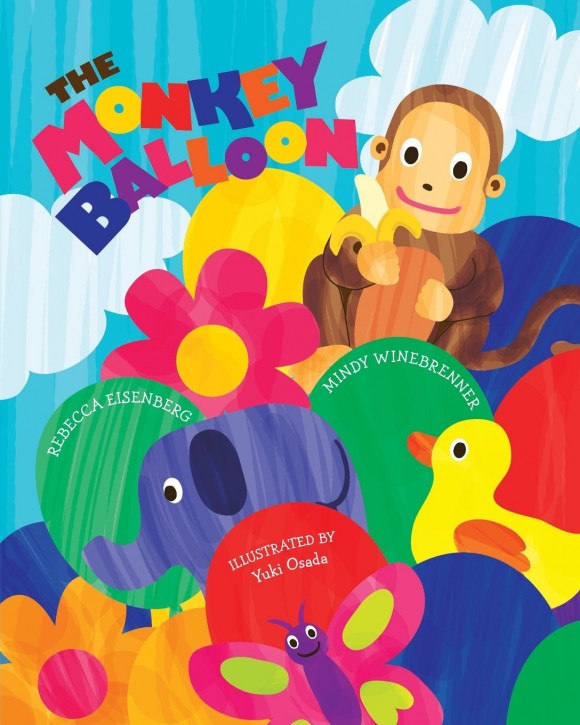That Time I Accidentally Created a Legal Argument that Went All the Way to the Supreme Court
I was a know-nothing first-year lawyer in the fall of 2005 and ended up as an employment lawyer defending corporations against pissed-off employees. I hadn’t even gotten my bar scores back, so I wasn’t allowed to practice without supervision. I had never taken a trial law course or an employment law course. I had no idea what I was doing.
I’m assigned to this case — a bank teller is suing a bank for unpaid overtime. Without getting to lost in the weeds, the important part about the case was that it was brought in Federal court but applied New York State law. NYS law, in the employment law setting, doesn’t have a “class action” option. Instead, there’s something called a “collective action.” I’ll explain the difference as we move along, but at this point in the story, I hadn’t even heard about collective actions before either, so don’t feel bad.
Anyway, there were three lawyers on the case: two partners (both pretty senior) and me. There wasn’t a lot for me to do because I didn’t know anything, but the more junior of the partners gave me an assignment: read all the cases in our area dealing with this part of NYS law over the last few years and read all the cases that the judge we’ve been assigned to has worked on over the last six months. It was busy work — no one expected me to learn anything of value to the case, myself included. But whatever, I was getting paid to learn something which could have value to my professional development.
So I’m reading and I find out about this class action/collective action thing. The difference is pretty easy. In a class action, everyone else who is in the same situation as the plaintiff is considered to be already involved in the case (but has the right to opt-out if he or she so chooses). If you’ve ever gotten one of those legal notices about your rights in a class action in the mail, without any prior warning, that’s why. In a collective action, though, all of the other people who could potentially be involved have to opt-in. NYS employment law uses collective actions, not class actions, which kind of makes sense — you don’t want your pissed off former co-worker suing your boss if it means that you automatically end up joining that lawsuit.
OK, so I add that distinction to my toolbox and move on. I then learn about, in an unrelated case, Rule 68. It’s a federal rule of civil procedure called an “offer of judgment.” The details aren’t important for this story; click the link if you want to read more about it — but the idea is pretty simple. If you’re sued, you can make a formal settlement offer to the plaintiff for whatever amount you want. If the defendant rejects the offer and ends up with a judgment that’s worth less than that, he or she is on the hook for all sorts of bad things.
Now, here’s the neat part. You need to know about two other things lawyers know about: (1) that it’s pretty often the case that the maximum damages one can recover is not at all controversial and (2) the doctrine of mootness. The first one is straightforward. In the case of my bank teller, she was only owed unpaid overtime plus some statutorily-set penalty. Let’s call it a total of $200. (If that seems low, it isn’t; if memory serves, it was only like $50.) The second idea, mootness, is a little harder, but the basic idea is that if you don’t have a claim any more, your lawsuit goes away. (Basically, you can’t just sue because you’re mad.) There are lots of exceptions here, of course, but let’s apply it to my case, as I did, as a know-nothing baby of a lawyer:
I have a plaintiff who, again, can at most get $200. Right now, she’s the only plaintiff, because NYS law makes this a collective action (and others need to opt-in), not a class action (where they don’t). If we make a Rule 68 offer of, say, $250, we’ve offered the plaintiff more than she could possibly get even if she won her case. That’s where the mootness doctrine comes in — once we offer that amount of money, she no longer has a case against our client, and she’s out of the case. And because this is a collective action, again, there are no other plaintiffs. No plaintiffs means no lawsuit. The whole case goes away. That’s a huge win for the client because the bank doesn’t have to go looking through its records for other potential plaintiffs, for the low-low price of $250.
If you’ve read that far, you’re probably thinking that the previous paragraph is clownshoes insane. It is. It’s abusive and absolutely cannot be right. But I didn’t have that instinct because I was square in the “a little knowledge is a dangerous thing” part of my legal career. So, I took it to the partner who assigned me the question.
And she read me the riot act.
I must have missed something or I don’t know how to research or how come this hasn’t been done before or this is why we shouldn’t hire new lawyers or whatever. Total dressing down freakout on her part. She went to the other senior lawyer on the case and, from what I understand, started complaining about how this baby lawyer was wasting her time and the client’s money and I needed to be taken off the case. (I wasn’t in the room, but I heard about it later.)
The other partner was more amused than angry — he was more tolerant of baby lawyers and our missteps — and looked through my notes. (If memory serves — and it doesn’t — there was one court that had, in a footnote, talked about how Rule 68 could be abused in a matter similar to this, but the court couldn’t find any precedent addressing that abuse.) While he agreed that my idea was, again, crazy, he also couldn’t find a reason it didn’t work. He assigned a mid-level associate to check my work and to look for decisions that contradicted my conclusion.
That associate found nothing.
The next day, the two partners (with that associate in the room) grilled me for about an hour about my research. And then they told me that I was almost certainly wrong but they were going to try it, because no one can find a case that says I’m wrong.
The other side didn’t find any reason I was wrong, either, and argued that adopting my theory would make for an awful public policy, which it absolutely would. The judge considered that argument, stating that the public policy concerns “do give this Court some pause,” but ultimately agreed with my research and theory, and we won the case.
The partners on the case thanked me and I heard a rumor that I was given credit internally, which I guess was nice. I effectively left the practice of law shortly thereafter. Coincidentally, I promise.
In any event, for the next decade, this trick became a staple in the class action defense world. But in January — as in, two months ago — the Supreme Court, by a 6-3 vote, decided I was wrong.
Originally published on March 23, 2016To Square One TV, With Love
I originally wrote this four years ago for work. I’ve updated the years (“29 years ago” instead of “25 years ago”) but it’s otherwise a straight lift from then. Also: starting at 10:30 AM today, I have a dozen or so tweets about Square One scheduled, in case you want to follow me on Twitter.
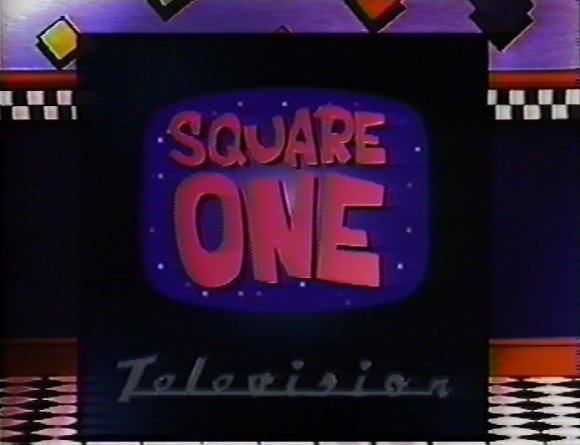
Twenty-five years ago today, my life changed for the better. Twenty-five years ago today, Square One TV debuted.
Square One was a thirty minute delight featuring short sketches about math. There was Mathman, a math-parody of Pac-Man, who would go around the game board looking for tasty numbers to eat — but only ones which met the rule of the day. (Fans of the show can probably hear the voice in their head: “Mathman, Mathman, multiples of three, multiples of three, Mathman.”) The show had miniature game shows, likePiece of the Pie and But Who’s Adding?, featuring regular children as contestants. It had math-teaching music videos like Nine, Nine, Nine (“times any number you can find, it all comes back to nine”) and Less Than Zero (“a certified, nationwide klutz”). There was Dirk Niblick, Blackstone, Mathcourt, and more.
And of course — of course! — there was MathNet, which closed every episode with a piece of a week-long story. Be it the kidnapping of Steve Stringbean or the complicated confidence scam perpetuated by the mysterious swami, these MathNet memories are ingrained deep in my psyche. Trying to figure out how George Frankly and Kate Monday (or Pat Tuesday!) would solve the case became an obsession; tuning in on Friday to have the answer revealed became a core part of my week.
It was math. And it was wonderful.
The nine year old me did not know it at the time, but like everything else we do at Sesame Workshop, Square One was designed to address an educational need of children. In this case, Square One‘s goal was to address the “math crisis” of eight to 12 year olds in the United States, using media to help teach mathematical concepts in an enjoyable fashion. And while writing this blog post for the organization which created the show appears self-serving, if you’ve spoken to me about Square One, you know that I can still sing significant parts of 8% Percent of My Love (and have also reserved 10% of my love for the New York Football Giants; sorry Patriots fans) while reciting esoteric plot points from series of MathNet. Does anyone else remember the kid who tried to sell George the $50,000 pencil? He only needed to sell one!
Happy birthday, Square One TV. And may you avoid Mr. Glitch.
Originally published on January 26, 2016An Idea for a Two-Tiered Fantasy Baseball League: GMs and Agents
I had this idea a few years ago and wrote it up somewhere else, but in hope of actually making it happen now, I’m dropping it here. (To give an idea of how old the idea is, the example player I used in the original version was Albert Pujols.)
Short version:
- Take a regular fantasy baseball league – 5×5, fantasy points, whatever. Doesn’t matter. Has to be an auction draft and a keeper league though. Determine the winner however you want. The competitors are the owners/GMs of the teams. You know, standard fare.
- Add a second league next to it. The competitors are agents. Winner is the agent who makes the most money in any given season.
Longer version:
Let’s start with step 2 because it’ll make it easier to understand if we momentarily skip step 1. Oh, and all the numbers – salary cap and stuff – they’re just for explanation’s sake. I didn’t try and balance them to make sense.
Step 2: It’s the first year of the league. The GMs have their auction. Each GM has a $120 million budget for this year. Players are auction off as you would in a regular league auction.
Straightforward, right?
Before we get to Step 1, let me explain how agents make money, at least in this fictional world for the game.
Agents:
1) Take paid a percentage of their players’ contracts and
2) Maybe get some money if a player does well and/or if his team does well. Think of this as a proxy for endorsement deals – if an agent represents the guy who lead the league in homers and his team won the World Series, the player would probably get some big deal from Gatorade or Nike or someone, and the agent would probably get a cut. I don’t know if this one is workable, though. It’d be cool, but may be too hard to pull off.
So anyway, Step 1.
Step 1: Agents have their auction. I don’t know how it’d work exactly, but here’s what I’m thinking:
- Each agent gets $5m or $10m, not sure. Let’s use $5m for example. It’s not a salary cap because remember, they’re being measured by who makes the most money, and whatever they spend, they lose, so keep that in mind.
- Agents bid on players in a bid-or-pass style auction, with two numbers in play: dollars and percentage points. Dollars go in $10k increments, starting at $10k and going up. Percentage points go in 1% increments, starting at 25% and going down.
- Basically, agents spend $$$ to wine and dine players, so that’s the dollar stuff. They also negotiate with players by taking a smaller and smaller percentage of the contract.
- An agent can outbid another agent by upping the ante in either tranche during their turn. So if Mike Trout is up, and the current bid is $100,000 and 8%, you can go to $110,000 and 8% or $100,000 and 7%.
So taking Step 1 and Step 2 together, let’s say you’re Mike Trout’s agent – and to make it simply (and stupid), he’s your only client – and you spent $1m entertaining him and agreed to take only 3% of his contract. The GM who won him at auction bid $20 million. You’d end up with 3% of that, or $600k. So you have $5m – $1m + $600k = $4.6m in your war chest… if it ended there. (And you’d clearly suck as an agent.)
But wait, there’s more.
Step 3: GMs and agents negotiate long term contracts.
Consider the auction bid an offer sheet, and one which either side can unilaterally impose upon the other at any given point in the negotiations, ending it right then and there. It’s not a floor, necessarily, although practically I guess it would be.
What’s up for negotiation? I’d keep it mostly simple:
- Years
- Salary per year
- No trade clause
- Options, buyouts, opt-outs, etc.
But you can get creative if the league allows. Imaginations can come up with really neat things.
After that, it’s mostly a regular league, except that agents are involved in transactions.
***
For regular player salaries, players – and therefore agents – get paid in quarter increments, one each on Opening Day, June 1, August 1, and October 1. This has an effect on both GMs and agents. For GMs, it means that if you have $20m left in your budget on August 2, you can take on effectively $80m in player salaries, because 75% of those salaries have already been paid out.
Agents get paid when the player gets paid. However, that gets locked in once the deal is signed. So as long as the deal isn’t renegotiated, the agent gets paid even if he no longer represents the player.
The implication here is that agents have to manage their cash flow a bit – and of course, they’ll prefer signing bonuses to buyouts. (Whether the league allows the agents and GMs to put in other $$$-laden clauses is up to them; again, your imagination is the limit.)
***
Agents can try and steal players from other agents. I have no real good way to do this, but here’s what I’m thinking: a morale check, followed by an offer and option to match (maybe?).
Each player has a morale number. It’s calculated – and I’m doing this off the top of my head – as follows:
- Start with 10.
- Subtract one if the player’s team (in the league, not in real life) is currently in the bottom half of the standings.
- Subtract one more if the player’s team is in the cellar.
- Subtract one the player is not one of the three highest played players on his team, by both current year salary *and* average annual value (excluding performance bonuses and options and buyouts?).
- Subtract one more if the player is not one of the eight highest played players on his team, using the same formula as above.
- Subtract one if the player is not one of the five highest played players at his position, same math.
- Subtract one more if he’s not one of the 10 highest played players at his position, ditto.
- Add three if the current agent represents three or more other players on the player’s current team.
- Subtract three if the above bullet isn’t true *and* the stealing agent has three or more other players on the player’s current team.
(Note that the last two bullets encourage agents to try and manipulate rosters.)
The morale check: If the player’s morale is 7+, he can’t be stolen.
After that, the terms of the steal attempt are up to the stealing agent. He spends some dollar amount on a steal and if the current agent matches (with morale notes below), the current agent keeps the player and the stealing agent can’t try again for six months. If the current agent doesn’t match, the player switches agents and gets a +4 morale boost which wears off, 1 point per payday (as above) until it hits 0 in a year.
The terms of the agreement between the new agent and player – as well as what it takes for the current/old agent to stop the steal – are determined by the morale check described above:
- 4+, he can be stolen, but the stealing agent has to decrease the percentage the player negotiated with the current agent by one point *and* the current agent only has to spend half as much to match and therefore block the steal attempt.
- 0+, the stealing agent has to offer the same percentage and the current agent has to match the full money offered.
- Under zero, the stealing agent can offer 1% under *and* the current agent has to double the money the offered by the current agent.
Finally, the minimum money offered by the stealing agent has to be at least equal to the dollars last paid by an agent to acquire that player.
If the steal is successful, the money goes from the stealing agent to the original one. (I’m trading realism here for some balancing.) If it’s unsuccessful, the original agent’s counter-bid just evaporates.
Again, using the Mike Trout example, let’s say his morale check is a 5. To recap, the agent acquired him for $1m and 3%. Someone tries to steal him, so they have to offer $1m and 2% by rule. He makes that offer but the original agent blocks by spending $500,000. That $500,000 evaporates.
Another agent makes a try right after but offers $2 million and, again by rule, 2%. The original agent decides to let him go. That $2m goes to the old agent.
Two years later, Trout’s morale is negative somehow. Another agent offers him $2 million (by rule) and 3%. For his current agent to block, he’d have to pony up $4m.
Too complicated maybe. Too D&D, for sure. Maybe it needs a few d20s, dunno.
***
I think this could be fun. Stuff like no-trade clauses would be awesome, where you basically have to buy out the agent, and the agent may really really not want a player traded because of the morale hit other players would take, etc.
I don’t know how the second year would work. Part of me thinks free agents should negotiate contracts via their agents; part of me thinks it should be done via auction, just like the initial year. I also don’t know how unrepresented players would enter the league. None whatsoever. Further, there has to be some mechanism for agents to renegotiate deals for their clients, but there should be a way to prevent doing so in order to take over the value from the existing agent. (Probably some present-day-value calculation?)
But that’s the basics. What do you think?
Originally published on January 3, 2016Why I Think Player Opt-Out Clauses are All the Rage in MLB Free Agency
If you don’t know what the title of this post means, don’t bother reading further — it won’t make sense to you.
It’s been a strange MLB off-season. Many free agents — David Price, Jason Heyward (2!), and a bunch of others have signed new deals with new teams, but with the right for the player to opt out of the deal well before it would otherwise come to term. When even Scott Kazmir (three year contract, opt-out after year one) on that list, you have to wonder why.
My guess: teams see post-out out years as non-years, and use them as an accounting trick to make short contracts seem like long ones.
For background, it’s my understanding that the current free agent negotiation process starts with a discussion around the number of years; conversations around the annual salary (and therefore, total value) come later. This makes sense because “years” is effectively a multiplier and one that reduces the risk incurred by a player. If Team A is willing to go to five years while Team B is only willing to commit to four, it’s going to be really hard for Team B to match A’s offer in total dollars, and therefore in risk management as well.
For teams, though, long-term commitments are not a good way to manage payroll. As a Mets fan, I see this all too often — the team regularly balks at signing free agents to market-length deals. (Per the rumor mill, this has come up in regard to Yoenis Cespedes, Denard Span, Tyler Clippard, and a few others — and that’s this off-season alone.) Signing a 31-year-old to a one year, $16m deal is often a smarter move than signing that very same player to a three year, $37.5m one, even if the latter is much cheaper on a per-year basis (and with some fun accounting tricks, you can easily halve the cost of that contract in year one). That’s basically the mix that Daniel Murphy faced.
So for sake of discussion, let’s break his options down, putting aside that he had to decline the first option before the second was even on the table.
Team 1: A one-year deal for $16m.
Team 2: A three-year deal, in total, worth $37.5m, paid out as $8.5m, $12.5m, $12.5m, plus $4m deferred (with no interest) until what would be year four.
That’s pretty close to even, although I think most players would go with Team 2. Let’s add a third team to the mix:
Team 3: A three-year deal, in total, worth $36m, paid out as $12m a year,.
Relative to Team 2, that’s a tough decision. Team 3 is worth less, but only $1.5m less, and because it’s not back-loaded, is probably the one that wins. Still, it’s close.
But now, Team 1 sees an opening. They call up the agent and say that they, too, are willing to go to three years — and are ready to talk dollars.
Team 1A: A three-year deal, in total, worth $37.5m, paid out as $16m in year one, $7.5m in year two, and $8m in year three, plus $4m deferred (with no interest) until what would be year four. The contract also comes with an opt-out after the first year, so if the player wants to walk away from that last $19.5m over two years (payable over three), he can.
This is easily the best deal of the group. You get the $37.m million you’d get from Team 2, plus the time-value of the money from Team 3 — or, at least, most of it.
Realistically, though, the player is almost always going to opt-out. Unless he has a catastrophically bad first season, he’ll likely make more than $10m per year for two or more years. He’d be a fool to remain with Team 1. (And, if he does have a really bad year and rebounds, the team has him pretty cheaply for that last year.)
In practice, teams are going to be close to indifferent between offer 1 and 1A — so from the team’s perspective, the post-opt out years are for show, and aren’t expected to be realized. We haven’t hit the extreme example (with the front-loading) that I’ve articulated above, but as front-loading is economically less preferable than the alternatives, that’s not a strike against my argument. But, in effect, I bet that some teams are seeing the lengths of these contracts as only as long as the pre opt-out part. That’s bringing more teams to the negotiating table, which is what I think is driving the opt-out craze.
Originally published on December 31, 2015
New to Star Trek? Here’s My Suggested Viewing Order
If you’re reading this, it’s because you want to give Star Trek a try. That’s great, because Star Trek is great, and you should watch it. But there’s a lot of Star Trek out there. Where do you start?
I have some suggestions, of course, below. But before I get there, some notes about my viewing habits. With the exception of the original series (“TOS”), the subsequent animated series (“TAS”) and the two new movies, I’ve seen just about every episode and movie. I watched The Next Generation (TNG) when they came out, tried Deep Space 9 (“DS9”) when it came out — and then gave up. That was fifteen years or so, though. In recent years, I’ve binge-watched my way though TNG again, then through most of DS9, and eventually every episode of Voyager (“VOY”) and Enterprise (“ENT”). Along the way, I’ve watched a handful of TOS episodes — probably about a dozen, maybe twice that.
My recommendations are based on two things: (1) my own experience and (2) an assumed preference for modern-day production values. Combined, that means I’m not going to focus on TOS episodes. That said, you should have a basic understanding of Kirk, Spock, Vulcans and Klingons. It doesn’t have to be very much, though — basic means basic.
Phase 1: The Khan Collection
- Space Seed, TOS, Season 1 Episode 24
- Star Trek II: The Wrath of Khan (movie)
- Star Trek III: The Search for Spock (movie)
- Star Trek IV: The Voyage Home (movie)
I selected this path for one big reason: I think most of my generation of Trek fans began this way — or, more accurately, with the second movie. Everything we know about the original cast (and Vulcans and Klingons) starts with The Wrath of Khan. I grew up pre-Netflix etc., so watching “Space Seed” wasn’t an option until years later, but Khan is introduced to us in that episode so I included it. “Space Seed” isn’t the best TOS episode but it sets up Star Trek II. (I didn’t get around to watching Space Seed until years after watching The Wrath of Khan, but it makes the already great movie much better.)
If you really like Space Seed, you may want to add more TOS episodes to your early mix, but you can always come back to those.
Phase II: Klingons
- Optional: Errand of Mercy, TOS, Season 1, Episode 26
- The Trouble with Tribbles, TOS, Season 2, Episode 15
- Optional: More Tribbles, More Trouble, TAS, Season 1, Episode 5
- Star Trek VI: The Undiscovered Country (movie)
The Khan group should give you a good picture of who the Klingons are but if you’re still looking for more, add in Errand of Mercy. It’s the first time Klingons enter the storyline — they’re only in seven episodes in TOS — so you’re starting from scratch there.
The Trouble with Tribbles episode isn’t really necessary here but it’s important later on, and this is also one of the more well-known TOS episodes. Because of the role Klingons play in the story, I think it’s good to have under your belt before you get to Star Trek VI. The TAS episode just helps flesh out the Tribble storyline a bit more, but has nothing to do with the movie.
You’ll note I skipped the first TOS movie and the Star Trek V. That was intentional.
At this point, you should know the TOS storyline well enough. If you’re interested in testing your knowledge, though, here’s a quiz. You should be able to get at least 12 of 27 right, although the 2 minute time limit may be rough.
The Rest
After that, it’s pretty straight-forward: watch everything, in order it was made. It’s not all awesome, of course. The first season of TNG isn’t great. DS9 starts slowly, too. A lot of people really don’t like the VOY captain (especially after the Tuvix episode), and ENT is hit-or-miss throughout (and the last season is kind of a let down).
- All the TNG episodes
- The first four seasons of DS9 and the first nine episodes of Season 5 of DS9
- Star Trek: First Contact (the TNG movie)
- The rest of the DS9 episodes
- All of the VOY episodes
- All of the ENT episodes
The reason for shoving First Contact in there is because the uniforms on DS9 change over to match the ones in the TNG movie, so I guess I’m just keeping the timeline intact. There’s a character who is in both DS9 and TNG so there’s a bit of value in doing it this way, too.
For bonus points, you can line up TNG, DS9, and VOY so that episodes which occur in roughly the same time period are being watched contemporaneously. The shows don’t really interact, though, so that’s really not necessary. If you want to do that, though:
- Start watching Season 1 of DS9 so that it coincides with Season 6 of TNG
- Start watching Season 1 of VOY so it coincides with Season 3 of DS9.
If You Want to Do More
I’ve skipped over five movies — the two TOS ones as mentioned above and three TNG ones. The TNG ones are Generations, Insurrection, and Nemesis and all have pretty mixed reviews. But who are we kidding: if you’ve made it this far, you’ll probably end up watching all five.
Also, I’m told that the ENT novel “The Good That Men Do” is very good, and makes the last episode of ENT more palatable.
Originally published on November 2, 2015
The Twelve Coins
This is my favorite brain teaser/logic puzzle, by far. I learned it in my high school math class one morning and spent the rest of the day figuring it out. It comes in two parts.
1) The Heavier Coin
You have a balance and twelve coins, one of which is heavier than the rest, but you don’t know which one it is. Using just 3 weighings on the balance, can you identify which coin is the odd one out?
Okay, you’re probably wondering why that’s so hard, right? It’s a pretty simple puzzle. (I’ll not ruin it in case you haven’t figured it out, though.)
Let’s make it harder by making one very simple change — instead of me telling you that the odd coin is heavier than the other 11, I’m going to make it simply “different.” It could be lighter. It could be heavier. Who knows? Everything else stay the same. Here’s the new question:
2) The Different Coin
You have a balance and twelve coins, one of which weighs a different amount than the rest, but you don’t know which one it is — and you don’t know if the different coin is heavier or lighter than the rest. Using just 3 weighings on the balance, can you identify which coin is the odd one out — and whether it’s heavier and lighter than the others?
That’s a small change but it makes the puzzle much harder. Give it a try, you’ll see.
(If you want the solution, click here.)
Originally published on December 30, 201413 Books For Young Children Chosen By 3 Young Children I Happen to Know
One of the habits we try and encourage in my house is reading, and we believe it’s important to instill a love of books at a young age. We’ve been through a lot of books over the last almost-decade and we therefore have some built-in expertise on the subject. I now have three experts on children’s books at the ready to help anyone who wants to know what books make for good presents, so I decided to try a little experiment: Zagat-style reviews of books for young children. (I’m defining “young children” as ages 0-8.)
If you’ve never flipped though a Zagat, what the editors do is pretty simple and effective. They survey a bunch of diners, read through the responses, and then select quotes which summarize the overall take by the diners in aggregate. I’m doing the same thing, below, except that my survey has only three participants, all between the ages of three and ten. (The one over the age of 8 asked that I put this line here, objecting to the characterization that he is a “young child.” So noted.) also happen to live with me, making this rather convenient.
A disclaimer: The opinions stated below aren’t necessarily that of my employer or anyone else I’ve ever known. In fact, they’re not even my opinions, really; I’ve tried to stay as true as possible to the kids’ opinions, even in selecting the books.
All age ranges are via Amazon, if provided; all links are Amazon affiliate links.
Llama Llama Red Pajama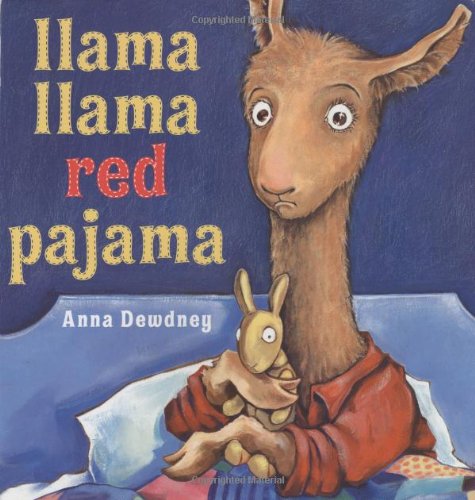 (Ages 3-5):
(Ages 3-5):
“I have that book!” one reviewer excitedly exclaimed. “Yes!” “It tells kids that pajamas are good clothes” and “to go to bed.” And of course, “don’t scream when it gets dark at night but you’re still awake.” The children advise that this is a good book if your children need to be told to go to sleep when they wake up in the middle of the night.
 Dinosaur Versus Bedtime (Ages 2-5):
Dinosaur Versus Bedtime (Ages 2-5):
The children think this book is very funny because “the dinosaur keeps on winning and winning and winning” but in the end, he loses. One kid thinks that the book has a good lesson — you don’t always win — but the other two think that this book doesn’t have a lesson at all. “I met the author in Kindergarten,” beamed one child, who recommends the entire “Dinosaur vs.” series.
“This is one of my favorites!” even though it starts off sad — the girl “loses her monkey balloon!” The girl keeps looking and looking for her monkey balloon “but could not find it” until the end. “Then they find it,” one kid notes, but asked the person typing to not ruin the ending, “because that’s not fun.”
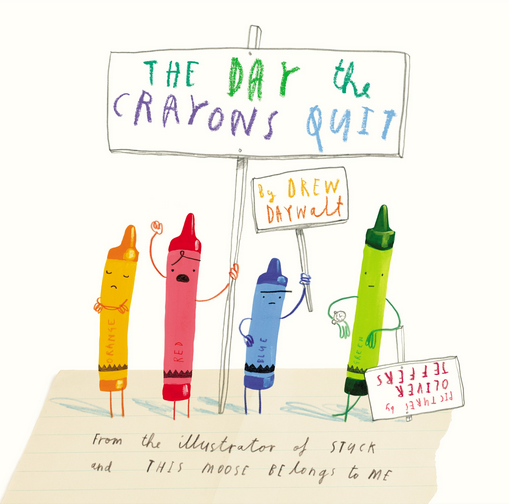 The Day the Crayons Quit (Ages 3-7):
The Day the Crayons Quit (Ages 3-7):
“Everybody should like this” says the oldest of the three but the youngest disagrees — “I don’t like that book!” The oldest warns “don’t read the peach page” because “it makes you want to do this” (he says while wiggling his midsection). The middle guy explains: “the peach page is funny — it’s really funny! — because it says ‘I’m naked’ and the crayons asks ‘would you like to go to school without underwear?'” The only adult in the room adds that the quotes from the book may not be entirely accurate, but they correctly capture the plight of the peach crayon.
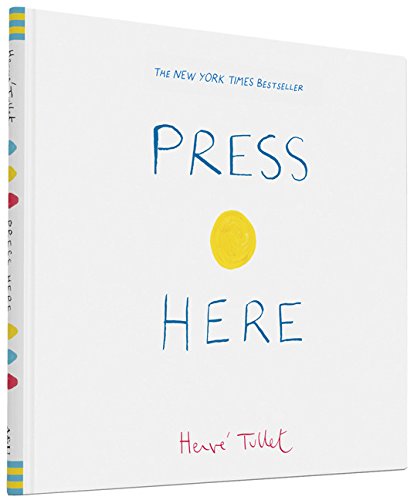 Press Here (Ages 2 and up):
Press Here (Ages 2 and up):
It’s a “good book” because “on the page it tells you do something” and when you turn the page, “things happen and it always makes sense.” The book is like an iPhone app but on on paper (except that you have to turn the page). “The end is the same as the beginning!” says one child with gusto. The youngest of the three asks that we stop reviewing books right now because “I want to read this book right now” but the oldest would rather get a snack. “A banana, please,” he asks.
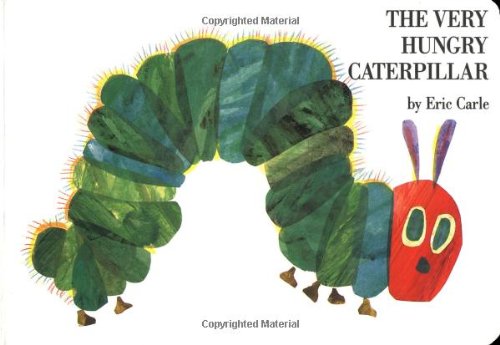 The Very Hungry Caterpillar (Ages 1-6):
The Very Hungry Caterpillar (Ages 1-6):
“The caterpillar book!” screams the youngest one when asked what book should come next. “I love that book! It’s one of my favorites in the whole world!” She likes that “the caterpillar eats a lot of food” and “gets a tummy ache” and “gets big big big big big.” She explains that he flies away at the end. The oldest one says “that’s called metamorphosis” but she objects — “no! it’s called a butterfly.” The middle child laughed at the misunderstanding.
Interrupting Chicken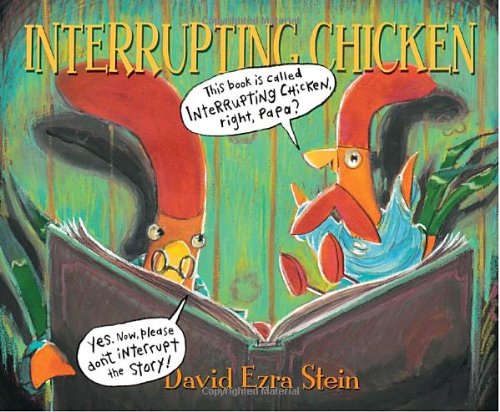 (Ages 4-8):
(Ages 4-8):
This book “teaches you not to interrupt” one child says as another, of course, interrupts over and over again. “Just like the chicken” the reviewer notes. It’s “really funny” and the defining theme of the book is that chicken “always interrupts” suggesting that the book lacks the depth of some other choices. Nevertheless, it involves chicken and is evocative of a massively-underrated joke, both of which are pluses.
 Chicka Chicka Boom Boom (Ages 1-4):
Chicka Chicka Boom Boom (Ages 1-4):
The oldest didn’t want to discuss the book — “it’s not for kids my age.” The middle agrees: “I don’t want to talk about this.” The youngest likes that “all the letters drop on the floor” even if “some get boo boos.” The father reminds the other two that they really liked this book until they were, rightfully in their opinions, too old for it.
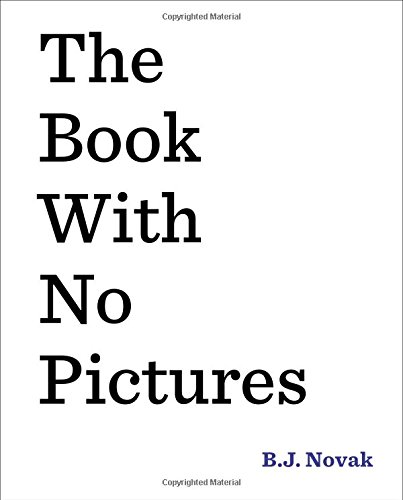 The Book with No Pictures (Ages 5-8):
The Book with No Pictures (Ages 5-8):
A huge hit and all three agree for the main reason: it makes the grown-up say “Boo Boo Butt.” One objection, from the youngest: “I don’t like how it says eeeeeeeeeeeeeeeeeeeeeeeeeeeeeeeeeeeeeeeeeeeeeeee.” None of the three care that the book has no pictures, but all believe that the book wouldn’t be fun to read — you really need the grown-ups to do the reading so you can laugh at them.
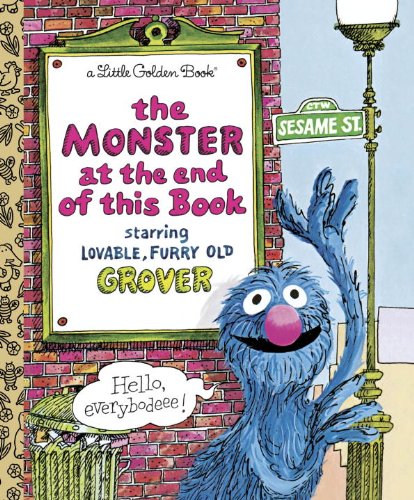 The Monster at the End of This Book (Ages 3-7):
The Monster at the End of This Book (Ages 3-7):
“Grover is really silly” laughed one child who then began giggling uncontrollably, unable to add further commentary. Another took over: “Grover really tries hard to stop you from turning the pages and even builds a wall” but “it’s easy to break the wall, you just turn the page!” The popular opinion: the book is more fun of the reader tries to read in Grover’s voice, but that is, graciously, not required for enjoyment.
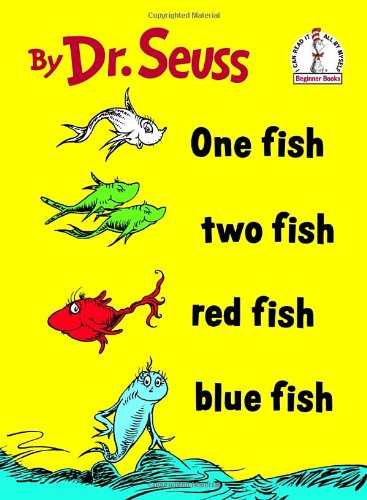 One Fish Two Fish Red Fish Blue Fish (Ages 3-7):
One Fish Two Fish Red Fish Blue Fish (Ages 3-7):
The book for everyone: varied enough where you’re bound to have a favorite part, but never quite disinteresting. Selected highlights include “when the girl brushes the pet’s hair,” “the guy with eleven fingers,” “the animals that need haircuts every day,” and “the mouse that cut the phone wire” (he’s “pretty funny,” one smiled). No one likes the man with the old hat and gold teeth though — he was “weird” and kind of “scary.”
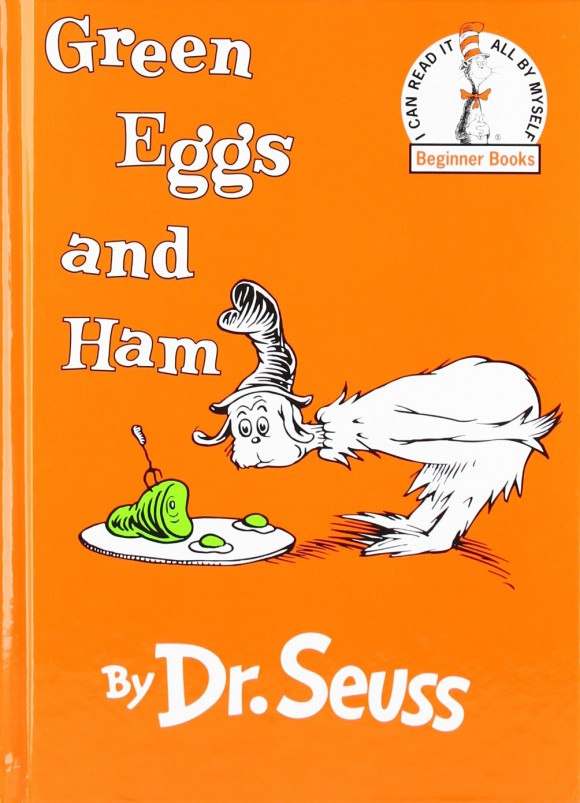 Green Eggs and Ham (Ages 3-7):
Green Eggs and Ham (Ages 3-7):
A “silly” way to teach kids “to try new foods,” says one child, charitably. It’s a “rhyming book” like “most Dr. Seuss books,” some select examples — from memory — are “ham and Sam,” “house and mouse,” “with a fox’ and ‘in a box’,” and “train and rain.” To underscore how memorable the book is, when asked where Sam will not try green eggs and ham, all three, in chorus, acclaim (correctly), “anywhere!”
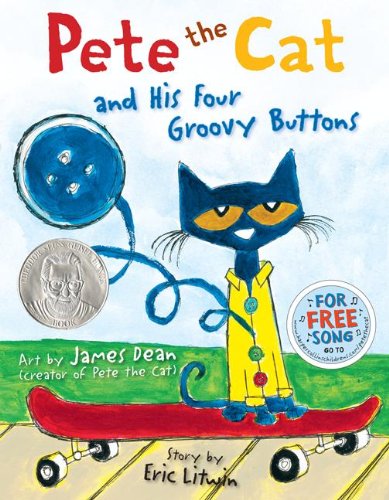 Pete the Cat and his Four Groovy Buttons (Ages 4-8):
Pete the Cat and his Four Groovy Buttons (Ages 4-8):
Pete keeps losing his buttons but he always says “that’s OK.” He still doesn’t cry when he is out of buttons because he “lifts up his shirt” and “still has a belly button!” One child wondered why Pete can’t grab the first button as it flew off his coat, but then remembered that “it’s because he can’t grip it” because cat’s don’t have opposable thumbs. (He needed reminding about the word “opposable.”)
Originally published on December 13, 2014Four Different Types of Tweets
This is mostly for my future use. A note to my future self, if you will.
Today in 1967, Högertrafikomläggningen happened. This was the result. (Explanation? http://t.co/Ec3GP6aQyr) pic.twitter.com/spWkQ5kgVT
— Now I Know (@NowIKnow) September 3, 2014
Dr. Awkward is a palindrome.
— Now I Know (@NowIKnow) September 5, 2014
There are exactly 11 characters which are common to the Russian, Latin, and Greek alphabets. pic.twitter.com/8BawWbTwzR
— Now I Know (@NowIKnow) September 3, 2014
This is what happens if you cut a grape almost in half, put a glass over it, and microwave it. http://t.co/uoCe9Cj9KG
— Now I Know (@NowIKnow) September 3, 2014
Originally published on September 6, 2014
FAQ: How to Support Now I Know
Now I Know takes me dozens of hours each month to write and put together. If you appreciate the content, please consider making a recurring or one-time gift in support of the project. And thanks to all of you who already have!
Here are some questions I’ve gotten about this so far.
* Now I Know is still free, right?
Yes, and it always will be. (Don’t worry!)
* Okay! How do I help?
There are two ways:
(1) Become a Supporting Member: You can make a monthly ($5/mo) or annual ($60/yr) gift. Click either link and you’ll be taken to Tugboat Yards’ website — they’re powering the program. Then hit the “Pay Now” button on that page. These auto-renew unless you cancel them, and if you chose this option, you’ll also receive a bonus weekly email called the “member letter,” as a token of my gratitude. That will happen automatically, but make sure you enter your email address on that page so Tugboat Yards can subscribe you to the “member letter” list.
(2) Make a one-time gift: I really appreciate that, too! Click here to make a one-time gift.
* Can I use PayPal?
Not yet. Tugboat Yards is working on it, though.
* Can I use BitCoin?
If you really want to, email me. We’ll figure it out. (Oh, and if you want to sign up for a Coinbase account, here’s my affiliate link.)
* Can I become a supporting member without getting the bonus email?
Yep! Just email me and I’ll remove you from the “Member Letter” email list.
* Wait, what’s this bonus email thing again?
Every week, on Wednesdays at 3 PM-ish, I send out an email like this one to all Supporting Members. It’s a collection of interesting things I’ve come across lately but doesn’t really make sense for Now I Know itself.
Any other questions, email me and I’ll answer them, or check back here to see if the answer pops up. Thanks!
Originally published on January 29, 2014
My Book. Your $3.
So this is a pretty big deal:
Amazon has selected my book as a $2.99 Kindle Deal for the holiday season!
For the next week or two, you can download the ebook for three bucks. Even if you don’t own a Kindle, you can still get it — there are Kindle apps for just about every device. Oh, and if you’re interested in sending a temporarily $3 copy to someone as a gift, here’s how.
Originally published on December 9, 2013